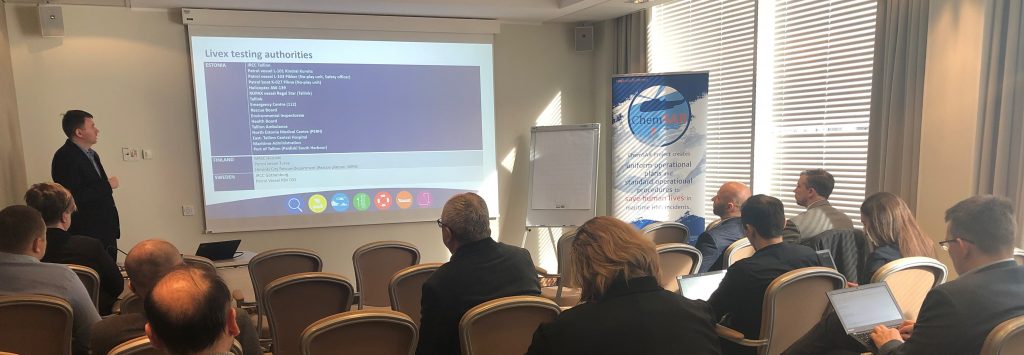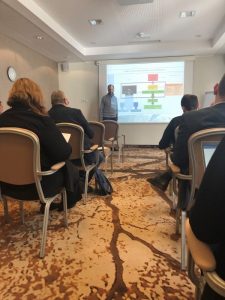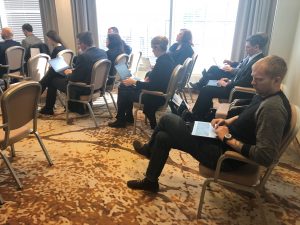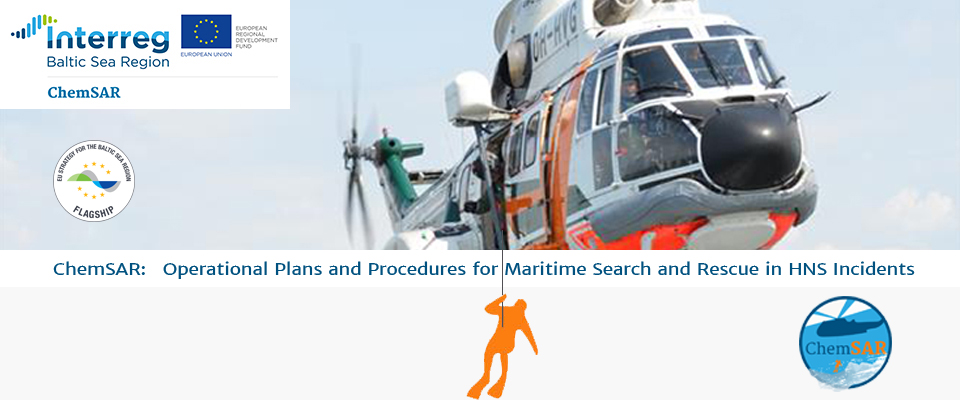Wrapping up ChemSAR in Tallinn
Estonian Police and Border Guard Board is already wrapping up ChemSAR activities in Tallinn. First, however, they wanted to to share the project results with the national co-operation partners, which have greatly contributed to the ChemSAR activities and many rescue exercises held in Estonia during project implementation. The national partners and interest groups were invited to the ChemSAR LIVEX National Summit held yesterday in Tallinn.

Danel Tüür telling about the ChemSAR live exercise held in Paldiski in September 2018 (Photo: Marit Mätik)
The National Summit was opened and chaired by Danel Tüür, leader of ChemSAR project’s pilot activities, whose daily work is in the Estonian Police and Border Guard Board Fleet. The Summit’s aim was to gather together all the national live exercise (LIVEX) participants to see and hear their ideas, and also to see and hear their point of views of the exercise and summarise that up.
In addition to the live exercise “Regal Star”, the Summit offered a possibility to hear about conclusions of WP5 pilot activities, results of LIVEX evaluation and Standard Operational Procedures (SOP) in practice. Feedback, lessons learned and experiences from the LIVEX from JRCC Tallinn SMC, Emergency Centre 112, Tallinn Ambulance, Estonian Environmental Inspectorate, North Estonian Medical Centre, and many other participants’ point of views. The aim was also to hear a little what are the future plans, where do we go from now on, and what are the objectives after the ChemSAR project.
Lessons learned and the way forward

The building up maritime incident response capacity will require specific resources and tight cooperation between all regions. The participants agreed that this kind of exercises are needed and what’s most important, they have to be connected tightly with land procedures and operations. Operations don’t end at the sea or when people are taken into the coast or land. When people are saved, it’s vital to ensure them a warm environment and clothes, water, food, first medical aid, and also to take them into hospitals if needed. That’s why it’s extremely important that in exercises all the areas are represented to enable joint exercising and working together. Joint exercising improves the knowledge of all procedures, management scheme and communication language. It ensures that everyone knows each other’s systems and work routines and enables good and tight co-operation in incidents. Only then we know that we can handle all the “difficult things” we are preparing us for. Also, we are ready if anything happens and we know that we will succeed in all the difficult situations that may occur.
In conclusion of the ChemSAR LIVEX National Summit, we can say that a lot of hard work has been done during the ChemSAR project. So, the first step in that area has been taken.

Now from that point here we can move only further. We have to take all the experience we got during the ChemSAR project with all the feedback and lessons learned points from exercises, such as the SOPs, and put it into everyday work. We will need to continue our work under the ResQU2 project platform, and what’s most important, to tighten even more our national and international co-operation.
ChemSAR LIVEX national Summit was held on 28th of March 2019 in Tallinn, Estonia.
Text and photos: Marit Mätik, Estonian Ministry of the Interior

Leave a Reply